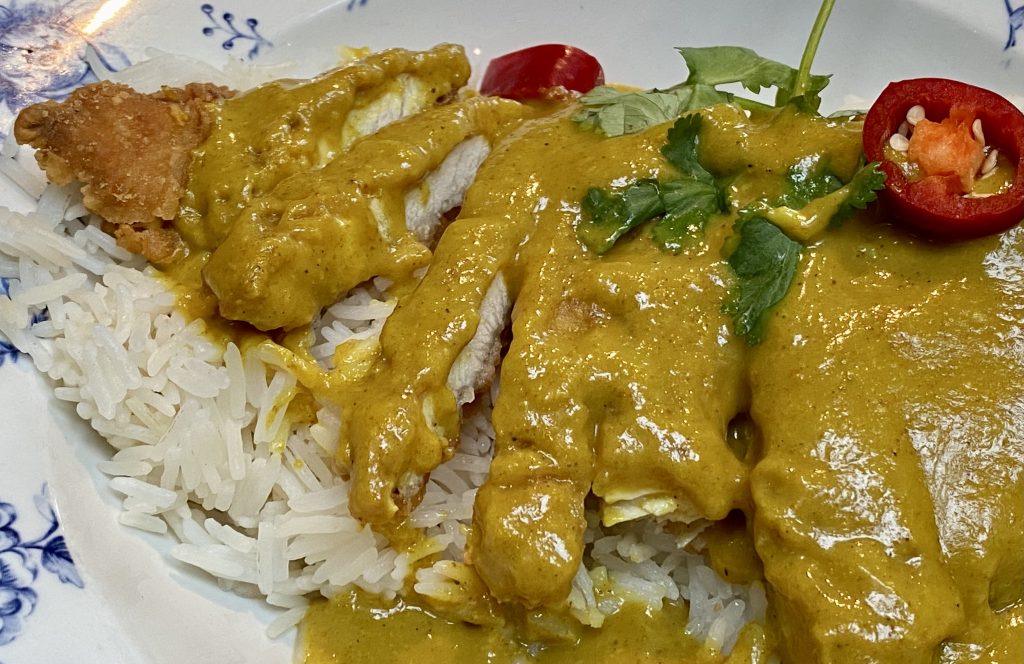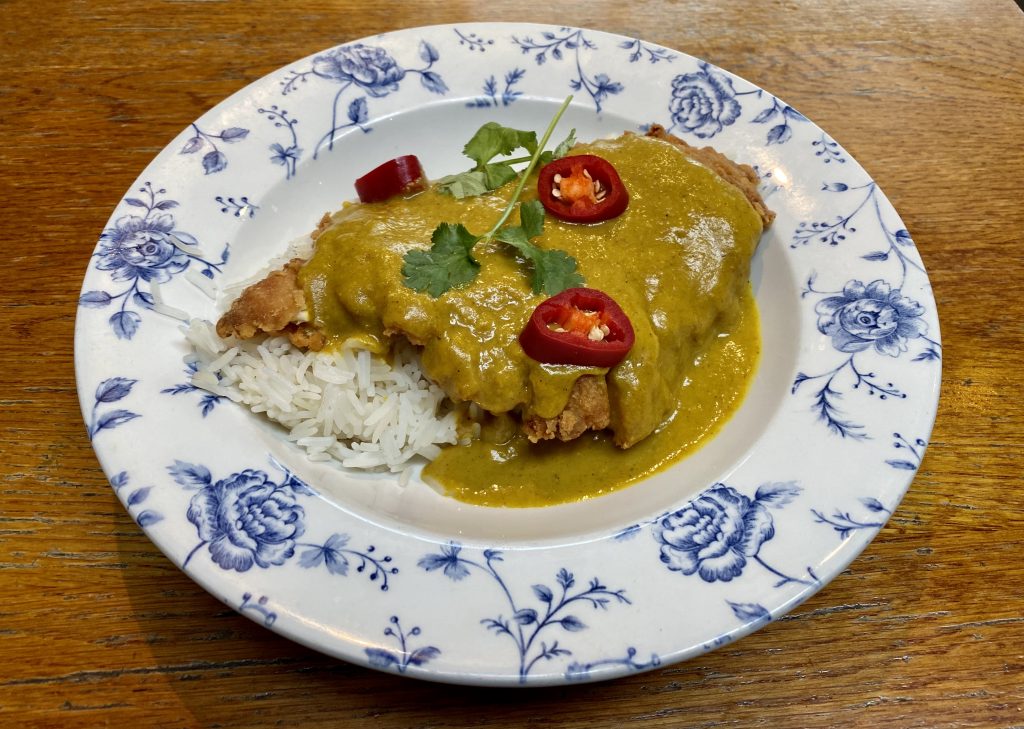Hold on a second, a Kastu Curry… at Wetherspoons? The same Wetherspoons that serves up cheap pints and pub classics? The same English pub chain that’s found in almost every UK town?
Yep. You can see why this had to be a Tribudishional blog entry! At a cheap-and-cheerful price of £7.26 with a soft drink (or £8.66 with an alcoholic drink), I wasn’t expecting much. Needless to say, I was pleasantly surprised.
So what is Katsu curry? A staple in modern Japanese cuisine and firm favourite amongst the population, it’s a traditional main course consisting of a meat cutlet, served with a curry sauce and Japanese rice.
Now there are a lot of things to pick apart here, so let’s start with the meat. The Japanese translation of the word “cutlet” is “katsuretsu”, often shortened to “katsu”. A pork cutlet, breaded with panko breadcrumbs and fried, is referred to as “Tonkatsu”. This pork is sometimes substituted with butterflied and pounded chicken breast, and the new name simply becomes “chicken katsu.” This is what I was presented with in Wetherspoons.
The chicken itself was fairly moist – surprising, considering it can be quite easy to overcook thin pieces of chicken such as this. Whether the chefs used the traditional Kannon Biraki method for butterflying the chicken was difficult to assess, once it was pounded, deep-fried and smothered in curry sauce… but I’m not very optimistic. Regardless, the presentation was as expected, with the chicken cut into slices and layered over rice.

But here’s the first shortcoming, and I’m afraid it’s a nit-picky one. The whole point of the cutlet being sliced is the fact that the dish is typically eaten with chopsticks… not the slightly stained western-style cutlery I was given. No matter, moving on.
Now it simply wouldn’t be a Katsu curry without the authentic sauce. Sweet and savoury, this sauce is similar to the meat, in that it has many variations. Sometimes a Worcestershire-like barbecue sauce is used (a national favourite being Bulldog Tonkatsu Sauce), other times it’s a curry sauce consisting of garlic, ginger, curry powder, turmeric, coconut milk and soy sauce. The latter is what I was given, and as far as the traditional sauce goes, it was pretty similar.
Typically in Japan, it is very common for people to purchase pre-prepared roux blocks, dump them in a pan with some water and apply heat. Now let’s just say I’m familiar with Wetherspoons, and have some idea of how food prep works in such establishments. That is, there isn’t much ‘food prep’ involved. This sauce was clearly out of a packet and nuked in a microwave… but considering that’s not far off to how the Japanese do it, I’ll let them off. Just the sauce isn’t made in a factory in Watford.
And the final component: the rice. Of everything, this was the most disappointing element of the dish. The chicken was served with simple coconut-flavoured basmati, quite different to the short grain Japanese rice (or uruchimai) that I’d hoped for. That being said, this could be a nod to the unlikely origin of Japanese curry.
Legend has it that when the British first landed in Japan, they carried with them rations of Indian curry powder. As the Japanese-English magazine Metropolis reveals, this soon became a staple in Japanese cooking, as it meant the navy could whip-up a quick, nutritious meal with ease. Perhaps this is why basmati was used, as a homage to the Indian roots of the curry sauce.
Or maybe they just wanted to save money. They do, after all, also serve Indian curries.
All in all though, I was pleasantly surprised with the quality of the food. And a clean plate is always a good sign. Overall, I’d give it a Tribudishional score of 6.5/10. Not bad.

©The Tribudishional Food Blog


Fantastic article very informative
Thank you so much! Glad you enjoyed the read.
A delight to read,
The Francis Newton is about to get busier!
It sure is! Pleased to hear you enjoyed the review, thank you.